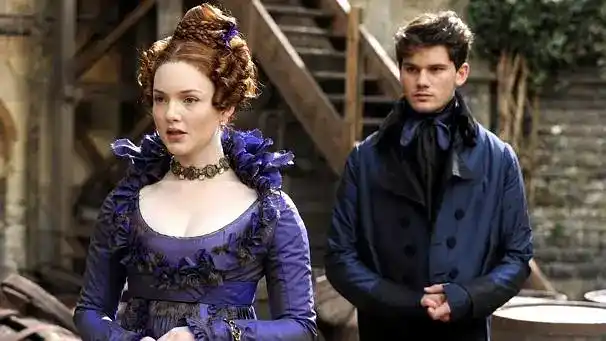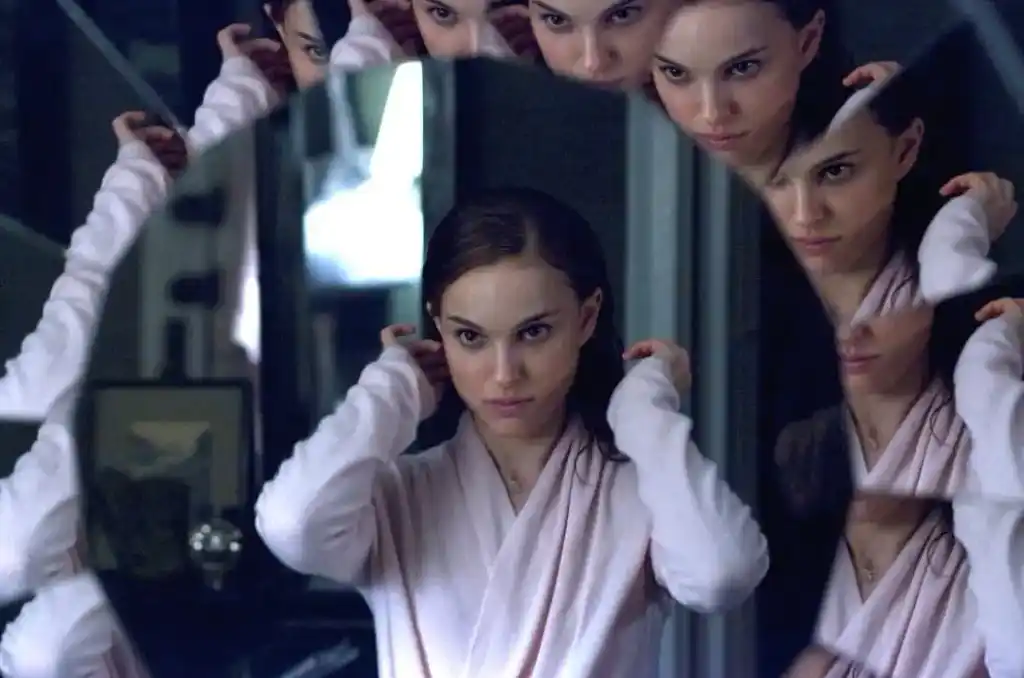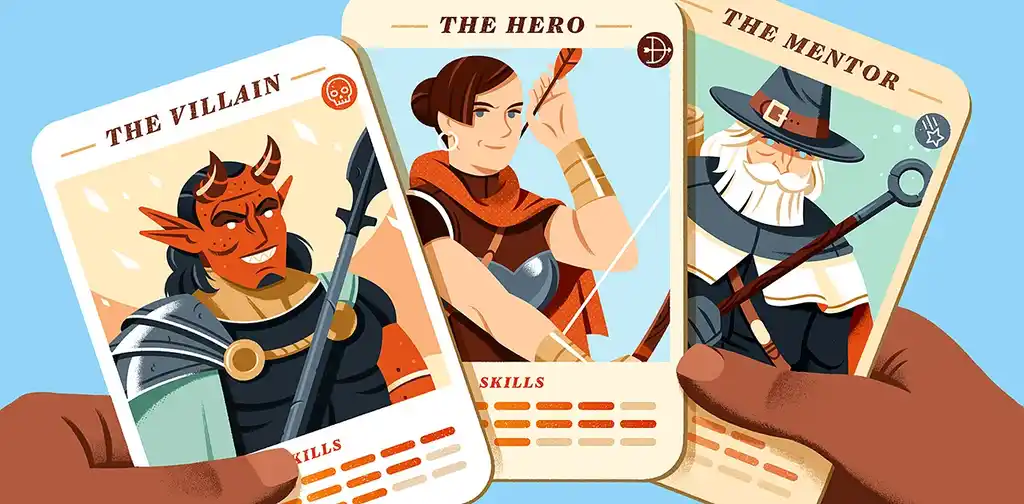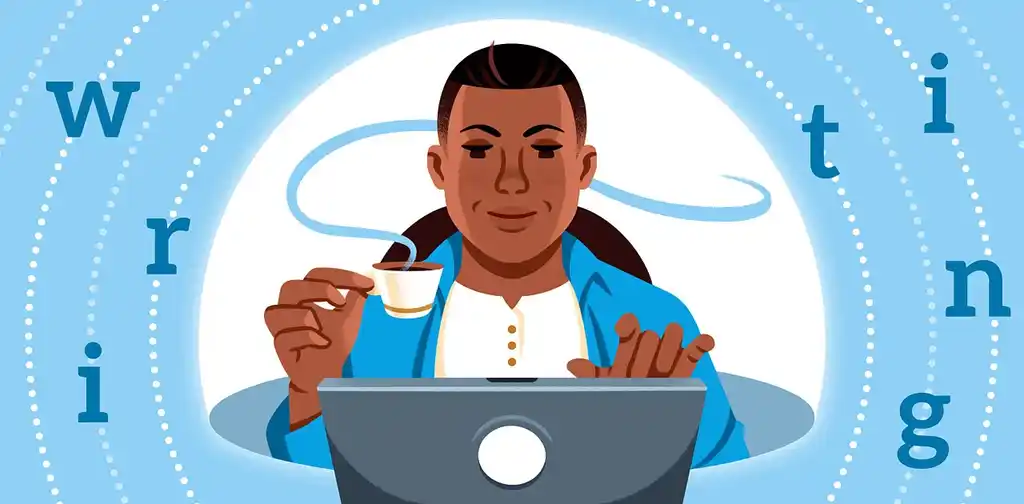Guides • Perfecting your Craft
Posted on Nov 04, 2024
Man vs. Self: The Ultimate Inner Conflict in Literature
Dario Villirilli
Managing Editor of the Reedsy blog, Dario is a graduate of Mälardalen University. As a freelance writer, he has written for many esteemed outlets aimed at writers. A traveler at heart, he can be found roaming the world and working from his laptop.
View profile →Linnea Gradin
The editor-in-chief of the Reedsy Freelancer blog, Linnea is a writer and marketer with a degree from the University of Cambridge. Her focus is to provide aspiring editors and book designers with the resources to further their careers.
View profile →We’ve all had moments of being our own worst enemy — whether it’s hesitating to ask someone out because of insecurities or abandoning a dream after convincing ourselves we’re not ready. This internal struggle, where our desires clash with beliefs that hold us back (or hubris that clouds our judgment), lies at the core of the man vs. self conflict (also known as character vs. self).
In this post, we'll explore the significance of man vs. self conflict in storytelling, look at some examples from popular books and movies, and share tips on how to make this type of conflict compelling for your readers.
What is man vs. self conflict?

Man vs. self conflict (often known as "character vs. self") is one of the seven types of conflict in narrative. It’s a type of internal conflict in literature that refers to the struggle a character has to face with their own thoughts, beliefs, or moral predicaments, which stand in the way of achieving their goals. It usually forces characters to make difficult decisions in order to grow and change.
Q: Does a protagonist have to change over the course of their story?
Suggested answer
Great question! And as with so many answers when it comes to writing fiction, the answer is 'yes and no'. Let me elaborate...
Sometimes, a change in a character and how it happens is the entire point of a story. Look at 'A Christmas Carol' by Charles Dickens, for example: Scrooge must look into his past and understand how his life has brought him to this point. For him, if he doesn't change, he will die a lonely and unmourned death. For us, if he doesn't change, then all we really have is a book about a man shouting at Christmas.
And then sometimes there is a Katniss Everdeen. Her qualities of bravery and knowing what's right are there from the start - she wouldn't substitute for her sister otherwise. Those characteristics remain strong throughout. The change in the Hunger Games books are often about the changes Katniss brings to the world around her; her main job in the narrative is as an agent of change, as someone who is unafraid to stand up for what's right. We often see this in superheroes.
I'm also thinking about Harry Potter, who doesn't so much change as have knowledge revealed to him that changes the way he sees himself. Yes, he gains skills and knowledge as the books progress, but he is (literally) marked to be who he is from the beginning. The change here is in his understanding of who and what he is, and what happened to him and his parents - something that the reader discovers along with him.
So I'd say that there always has to be change - otherwise, why would we read a book at all?
And change will definitely occur around the protagonist.
But that doesn't necessarily mean that the character begins as 'a', goes through 'b' and becomes 'c'. This is what makes fiction so interesting, to read and to write.
Stephanie is available to hire on Reedsy ⏺
No. But in most cases, it's probably a good idea.
This criticism ("protagonist needs development/arc/change") is often shorthand for "this story doesn't have much craft to it" or "there's no arc to this thing." If the protagonist has no arc, good chance the story doesn't, either—but this isn't a hard-and-fast judgment.
The better question to ask is whether your protagonist should change. If not, you should have a firm idea why not, and so should your reader by the end. What would the character's not changing say, mean, or do? Is it a tale where everyone knows the protagonist needs to change, but he doesn't? Does he suffer the consequences? Get away with it? And so on.
Unless you can articulate why your character shouldn't change, then your editor is probably right: change would help the story along. But before you get rewriting, decide how this change will advance the story, what effects it will have.
In other words: Don't just change a character arc because an editor said you should. Change it because the story will be stronger for it.
Joey is available to hire on Reedsy ⏺
This is what is usually expected, especially in coming-of-age stories for teens. However, in some cases, the point of the story might be that the main character does NOT change. And if this scenario works best for the story you are trying to tell, then the protagonist does not have to change.
While growth in the protagonist by the end of the story is the "norm" for most books, sometimes the growth comes from getting what they wanted at the beginning. There are many ways for "growth" to occur. Whichever path is chosen must make sense for your story and feel organic to the narrative, not forced.
Example of a "stuck" adult character that doesn't change:
Archie Bunker from the TV show All in the Family - always a cynic and pessimist
Example of an adult character who is "stuck" at the outset, but grows by the end of the story:
Macon Leary from The Accidental Tourist - becomes "unstuck" and more independent
So, you have to do what works for your story and makes sense in the overall plot scheme.
Melody is available to hire on Reedsy ⏺
As they say, "change is the only evidence of life." So as a rough, general rule, it's a good idea to have character development.
As well as being an editor, I'm a screenwriter, and protagonist change is often stressed as essential in films to keep an audience interested.
But it depends on the type of story and character. If a character is interesting enough, and the point of the story includes that they don't change, then don't force them to.
There are no infallible rules about storytelling.
John is available to hire on Reedsy ⏺
You’ll find this conflict at the core of many character arcs, adding depth and complexity to the protagonist. Readers love imperfect characters who wrestle with doubts and insecurities, which is why this conflict frequently appears in narratives. Sometimes it's the main focus, while other times it adds a secondary layer 一 the main struggle might be against nature, fate, or an antagonist, but the conflict usually also ties back to some internal battle that the protagonist has to wage.
But let’s get practical and look at some examples.
Man vs. self examples from literature and film
Great Expectation by Charles Dickens
Great Expectations by Dickens is a bildungsroman (or coming-of-age novel) in which the main character Pip is a poor, orphaned blacksmith’s boy with a kind heart who feels ashamed of his upbringing and fears doing anything that might worsen his situation, leading him to dream of a higher social status and overly idealize wealth.
After visiting the wealthy, eccentric Miss Havisham in her mansion, Pip falls in love with her adopted daughter, Estella. Driven by this infatuation, he becomes fixated on improving himself and climbing the social ladder, believing that a higher status will make him worthy of her love.
So when Pip receives a fortune from a mysterious benefactor, he eagerly transforms into a London gentleman and quickly starts to distance himself from his roots (for instance, he begins to feel embarrassed by Joe, the blacksmith who was once his loyal friend and protector).
His inner conflict lies in his struggle between achieving everything he’s ever wanted and staying true to his ideals. Will he devote himself to becoming a callous member of the upper-middle crust or remain loyal to his family and authentic self?

After losing himself in the idle luxury of high-class life and driving away those who loved him most — who remained loyal to him even after he became a gentleman — Pip ultimately learns that status doesn’t determine a person’s worth. He comes to realize that his kind heart had made him a true gentleman all along, and returns to his roots.
Black Swan (2010)
Black Swan is a psychological horror film starring Natalie Portman as Nina, a talented ballerina in the New York City Ballet. Nina is desperate to land the lead in Swan Lake, a role that demands she portray both the White Swan, embodying innocence and fragility, and the Black Swan, who is seductive and untamed. Nina effortlessly captures the White Swan’s delicate qualities — she lives under the constant pressure of her overbearing mother, a former (but ‘failed’) ballerina herself, who has drilled discipline and perfectionism into her daughter, so all Nina dreams of is to be the perfect dancer.
Q: What techniques can authors use to hook readers from the first page?
Suggested answer
Start with your main character doing something somewhere and start in the middle of the action. If there is a hurricane coming, have them board up the windows of their home. If they are dreading an upcoming test at school, have them look over their last test grades and worry that this next test won't be any different.
You want to avoid "talking heads." This is what publishers think when there is dialogue going on between characters, and because there is no sense of "place" or "setting", the story comes off as characters "talking in space." This is why you want the characters to be somewhere and do something in every new scene you draft, not just the opening.
Readers like to visualize the action in a book, even if the "action" is inward. So start off with a visual picture of your main character doing something, and this should hook readers.
Melody is available to hire on Reedsy ⏺
I recall reading a memoir of a famous tennis player and he started it by plunging the reader into his experience of facing a relentless machine shooting balls across the net to him -- all the fatigue and pressure of trying to become a pro was encapsulated in the scene. Much more interesting than starting it with when and where he was born etc.
John is available to hire on Reedsy ⏺
But to portray the Black Swan, she must tap into an intense, unrestrained side of herself she’s repressed her entire life. As her artistic director tells her, “The only one standing in your way is you. It’s time to let her go. Lose yourself.”

In the end Nina does manage to unleash her darker side and impress everyone at the opening night, but it comes at a cost: she injures herself in the process. As the director leans over her on stage, asking if she’s alright, she whispers, “I felt it. Perfect. It was perfect.” She got what she wanted, just not in the way she’d imagined.
Inside Out (2015)
In Inside Out, Riley is a young girl adjusting to life after her family’s move to San Francisco, and faces the pressures of fitting in at a new school. Her inner struggles come to life through personified emotions — Joy, Sadness, Anger, Fear, and Disgust — each shaping her actions as she tries to adapt.
The main conflict is between two emotions: Joy, the driving force in Riley’s mind, and Sadness. Joy is determined to keep Riley happy and sees Sadness as a hindrance, attempting to isolate her to preserve Riley’s memories as purely joyful.
But on Riley's first day at her new school, Sadness turns her core school memories from joyful to bittersweet, causing Riley to cry in front of her classmates. Joy’s panicked efforts to contain Sadness backfire, leading them both to be pulled away from Headquarters — Riley’s mind center. With both of them gone, Anger, Fear, and Disgust are left to manage Riley’s emotions, causing her to grow increasingly distant from her friends, family, and hobbies.

Meanwhile, Joy sees firsthand how Riley’s memories of sadness often led to moments of comfort and connection, like when her parents consoled her in the past. She gradually understands that Sadness is essential to Riley’s emotional balance. So when they return to Headquarters, she lets her take the lead. Riley tearfully confides in her parents about how difficult the move has been, expressing her sadness openly for the first time. This allows them to reconnect, and she begins to adapt to her new life.
By embracing Sadness instead of fighting it, Riley develops a balanced and resilient sense of self, recognizing that all emotions play an essential role in her inner landscape.
Now that you have a few examples of compelling man vs. self conflicts, let’s dive into how to create one just as powerful in your own novel. Here are some tips to get you started…

GET ACCOUNTABILITY
Meet writing coaches on Reedsy
Industry insiders can help you hone your craft, finish your draft, and get published.
3 tips for writing man vs. self conflict
1. Define the character arc first
A character’s arc is the transformation a character undergoes throughout the story. They start with one set of beliefs and develop a new one by the end. As author and editor Kirsten Bakis suggests, it’s helpful to define this arc while outlining your novel.
Q: What outlining techniques can 'pantsers' use to guide their storytelling without stifling creativity?
Suggested answer
Even having a very basic three-part/three-act overview of the story with just one page of notes per act will help you stay on course when drafting, so the finer details can emerge while you write. You want to know at least how the story ends, and then drive forward toward that ending. The ending doesn't have to be too specific, again, as details may arise while crafting the story, but knowing if it will be a tragedy or have a positive outcome at the end should help to drive the narrative forward.
Melody is available to hire on Reedsy ⏺
A character arc involves several key elements, which we dive into in a dedicated post, but in a nutshell: the character has a goal (the Want) and strives to achieve it, but an internal obstacle (the Lie) — often a belief about themselves or the world — blocks their path. To succeed, they must ultimately embrace the lesson they need (the Truth).
For example, in Inside Out, Joy’s Want is for Riley to feel loved and happy. She believes that Sadness is an obstacle to this, and tries to get rid of it (this is the Lie she must overcome). Her journey leads her to the Truth: real happiness and connection come when all emotions are allowed to play their part.
Having these building blocks of your character’s arc clear from the start should help you write a more compelling conflict.

FREE RESOURCE
Reedsy’s Character Development Template
A story is only as strong as its characters. Fill this out to develop yours.
2. Root it in the character’s background
If you think about it, why are we often our own worst enemy? It’s not something that we (or our characters) would choose consciously, right? The reason lies in our core beliefs, most of which form unconsciously as we grow up. Life experiences, especially difficult or traumatic ones, shape who we are and drive our behavior. And in the same way, these experiences must also shape our characters.
This is a key part of character development, defining both your protagonist’s profile and their backstory. In particular, it’s essential to understand how they came to believe the Lie that now blocks them from their goals and fuels their inner conflict.
Q: What is the most crucial piece of backstory an author should understand about their protagonist before beginning a novel?
Suggested answer
Whether in the backstory or in the current action of the book, once the reader starts reading, the author should know what their character wants. It can be a long-held desire or something new, based on changed circumstances.
There has to be a motivation and drive in the character. Or if there isn't any, and that is sort of the point of the book, you want to let the reader know why and what in their past has made them the way they are. This sort of "motivation" is a good thing to search for in each character. What has shaped them to do what they do and behave the way they behave in the story? They must stay "in character" throughout the book unless some sort of inner or outer impetus has forced them or inspired them to change their ways.
So this most crucial piece of backstory might be why your protagonist behaves the way they do, what motivates them and why, and what they want.
Melody is available to hire on Reedsy ⏺
In Great Expectations, Pip’s belief that status and wealth define his worth stems from the shame and rejection he experiences as a poor orphan. At home, his sister treats him with harsh discipline, making him feel like a burden. Meanwhile, he’s continually reminded of his lower status, especially during visits to Miss Havisham’s mansion, where Estella mocks his “common” origins. Given this, it’s only natural that Pip wants to escape his circumstances by climbing the social ladder, even at the cost of compromising his true values.
3. Link it to an external conflict
Characters confront their beliefs by acting in the world. It’s only when an inciting incident sets them on a journey to achieve their goal and they clash with all kinds of obstacles that they are forced to introspect and face their own limitations. In this sense, you can bring out your protagonists’ inner conflict through other outer conflicts.
Take Black Swan, for example. Alongside her inner struggle, Nina faces an external rival: Lily (played by Mila Kunis). Lily is not the most precise dancer, but she’s wild and free — qualities that Nina lacks. Over the course of the story, Lily draws out Nina’s "Black Swan" side (Nina literally both makes love with her and kills her, though only in her imagination).

FREE WRITING APP
Reedsy Studio
Set goals, track progress, and establish your writing routine in our free app.
4. Use symbolism to represent the conflict
One powerful way to bring a character’s inner conflict to life is through symbolism, recurring motifs, or metaphors. These techniques allow readers to feel the internal struggle in a more visceral, tangible way.
To stick with the Black Swan example, in the story Nina has a habit of badly scratching her back, which symbolizes the darker impulses trying to break through this suffocating idea of perfection her mother has imposed on her. When her mother (who still dresses her up) notices the scratches, she forces Nina to sit down while she trims her nails, literally trying to “cut away” Nina’s urges. As Nina gradually both fights against and embraces “the Black Swan within her”, the abrasions on her back grow worse, climaxing in a hallucination where she pulls a black feather from her skin, and her legs break in half, looking like those of a swan 一 a symbol that she has embraced that part of herself.
And there you have it — one of the most essential conflicts in storytelling. That wraps up our deep dive on the topic. If you’re ready to bring these conflicts to life on the page, head over to our Studio app and start writing!

